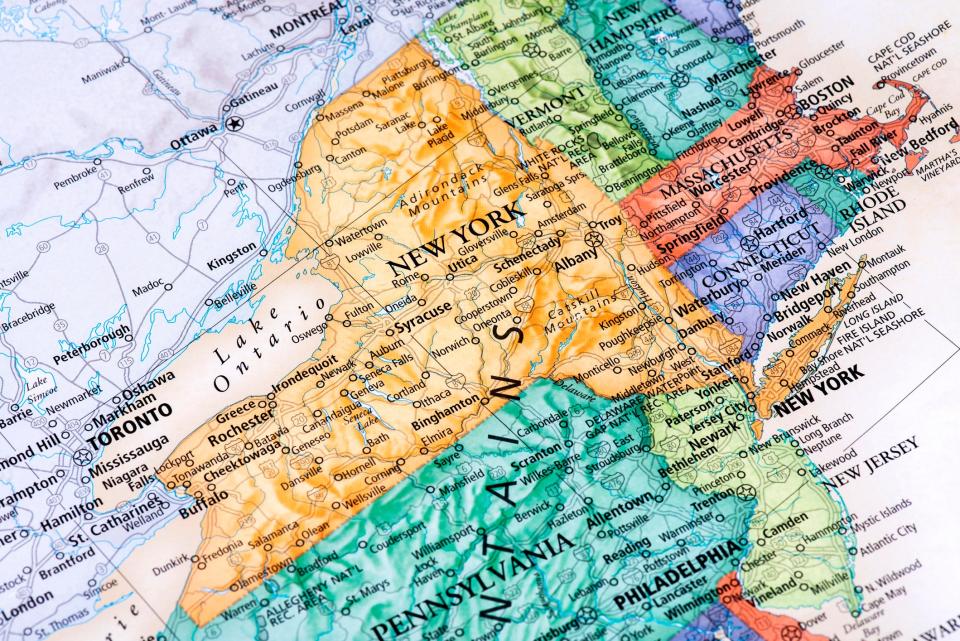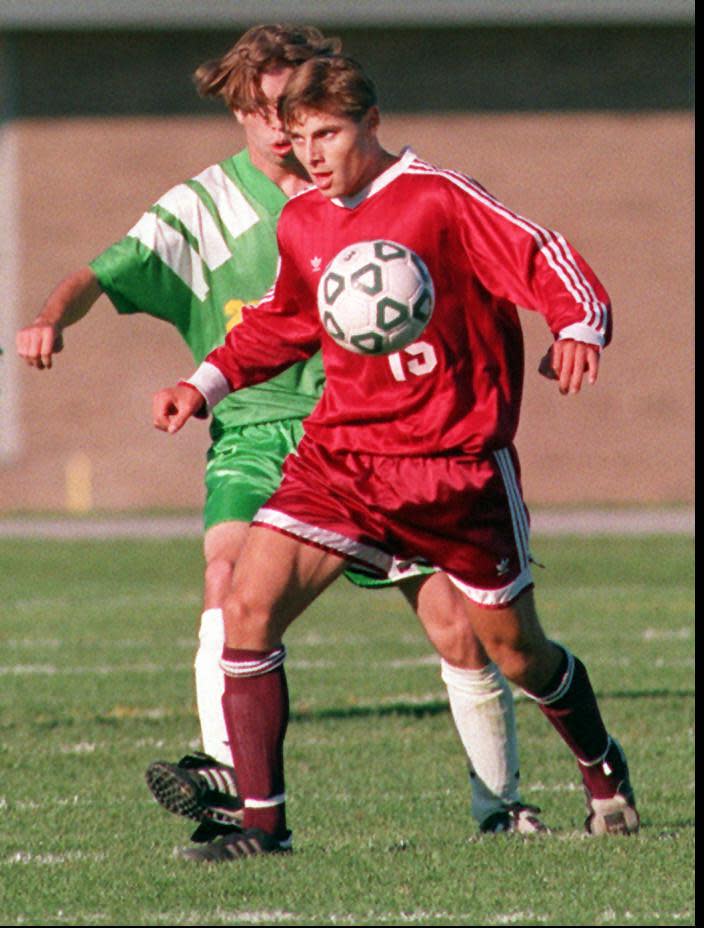Sure, a GPS is nice. But when up is down and south is north, a map would help
- Oops!Something went wrong.Please try again later.
We are traveling through the Adirondacks, east to west. We’re on Route 8 South. Strangely, the road is heading due north.
How did this happen? How could we be going south and north at once? We don’t really know. We’re just obeying our car’s built-in GPS system. A printed map might provide some reassurance, but the atlas Cindy found in the back seat is missing the page for the southern Adirondacks.
It has been years since we opened that atlas, dependent as we are on our phones (Google Maps) or the car’s built-in GPS system. That technology had earlier guided us to Burlington, Vermont, and our granddaughter Casey’s graduation from the University of Vermont.
We were on time to see her walk into the auditorium behind a squad of bagpipers. We cheered as she picked up her diploma. We hugged her afterwards. Thank you, thank you, Google Maps and GPS.
The next day the technology got us to the ferry across Lake Champlain. There we were on the water, the Adirondack mountains in the distance. What a wonderful world.

GPS guided us into the Adirondacks. It worked even when we lost phone reception. Still, as we got deeper into the woods, I wished we had that missing page; I yearned for print. Wanting a map on paper is the sort of impulse that draws me to print newspapers. Color me old.
The speakers at Casey’s graduation ceremonies were mapmakers of sorts. They gave directions for life after college. Be kind, follow your dream, don’t be afraid to change.
Casey, and all the others, know a lot about change. The pandemic roadblocked their lives, sent them home to broadcast remote from their bedrooms. The map for that experience was made up on the fly, new rules, new directions, new dislocations.
Memmott: The stories came alive by talking with fans in the stands of Silver Stadium
Memmott: Armed with an iPhone and a dream, he is learning to multitask one picture at a time
But the graduates survived, thrived. I think sometimes it is they who should be giving us directions. If Casey were in the back seat, if we were heading north to go south, she would laugh and say “Papa, don’t worry, the road will turn, we’ll make it home.”
And so we did, taking a left at Speculator, south became south again. After awhile Utica arrived, west became west, all was well. Nonetheless, this week I’m getting a road atlas, a big one, just in case. I need direction. I need a map. I really do.
Ukraine connection: An addition to Remarkable Rochesterians

We turn to maps in troubled times as well. Of late, we learn the names of cities in Ukraine, names already familiar to thousands of Rochesterians who have a personal connection to that country. They are either from Ukraine or have family in Ukraine. They watch the war there with horror.
Dema Kovalenko came here in 1992 from Ukraine as a teenager and starred in soccer, first for Honeoye Falls-Lima High School and then Greece Arcadia before going on to collegiate and professional careers.
Now living in suburban Chicago, Kovalenko, 44, flew to Poland a few days after the war broke out hoping he could join family members fleeing Kiev as the Russian army approached.
In the podcast “MLS: The Call Up” at the end of March, he talked from Poland about how his mother, sister and niece had lived in a bomb shelter in Kiev for 10 days before traveling in a crowded train from Kiev to Lviv in western Ukraine. From there, they went on to Poland. Later, Kovalanko’s father came.
At the time of the broadcast, Kovalenko was working to obtain visas for his family to come to the United States. In a phone interview this week, Kovalenko, who is back in the U.S., said he wasn’t able to get visas for his family, given the backlog of requests.
But his parents, his sister and her daughter are now in Greece, the country, where they have rented a house for a few months. “It’s quiet, and it’s nice, and most importantly, it’s safe,” Kovalenko said.
Helping his family may be Kovalenko’s biggest accomplishment, but for his achievements in soccer, let’s add his bio to the list of Remarkable Rochesterians.
Dema Kovalenko (1977 – ): The 1995 All Greater Rochester boys soccer player of the year, having starred for Greece Arcadia High School, he came to the United States from Kiev, Ukraine, in 1992. He played three seasons for Indiana University, helping the team to the 1998 national championship. Named an NCAA first team All-American, he then joined Major League Soccer’s Chicago Fire, playing there and also for D.C. United and the Los Angeles Galaxy before retiring at the end of the 2010 season.
From his home in Geneseo, Livingston County, retired senior editor Jim Memmott, writes Remarkable Rochester, who we were, who we are. He can be reached at jmemmott@gannett.com or write Box 274, Geneseo, NY 14454
This article originally appeared on Rochester Democrat and Chronicle: Maps are a thing of the past, but sometimes an atlas would help

